Tender squid coated in a well-seasoned batter, fried until golden and crunchy, then tossed with aromatics and spices, salt and pepper squid is such a delightful dish to enjoy!
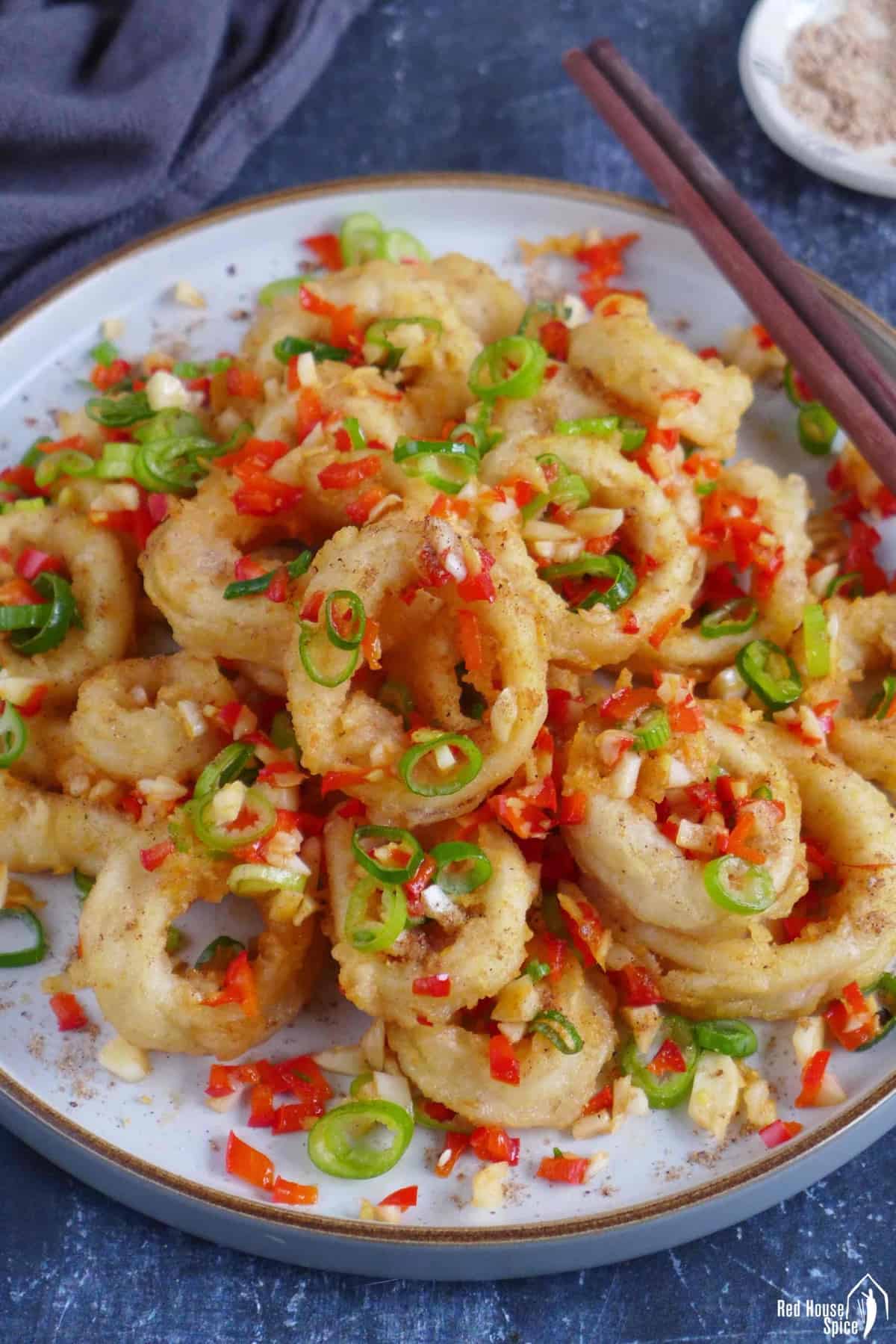
What is salt and pepper squid?
A classic Cantonese delicacy, salt and pepper squid is essentially batter-coated, deep-fried squid flavoured with a Chinese spice mixture known as Jiao Yan (椒盐) which literally means “peppery salt”. It’s ideally served over steamed rice for lunch or dinner or as a party appetiser for your next get-together.
The preparation of this dish is akin to Salt and Pepper Shrimp and Salt and Pepper Tofu that I shared earlier. However, a bit more care is needed for today’s dish because cooking squid requires finesse. Like many other seafood ingredients, it can quickly turn from delightfully tender to tough and chewy if not prepared properly.
Ingredients required
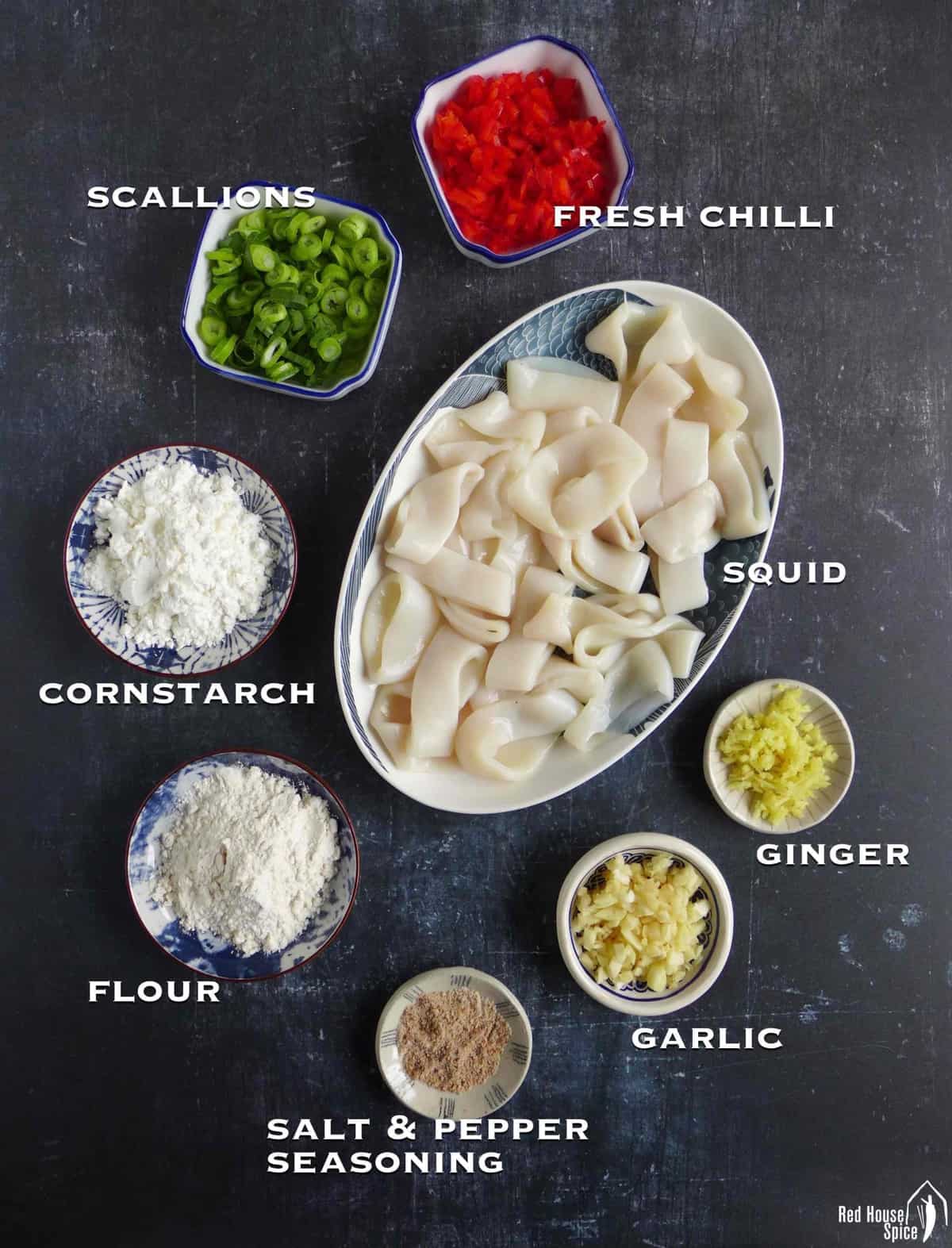
Squid
You can use either fresh or defrosted squid for this recipe. I used the body part only and sliced them into rings, but if you have whole squids, feel free to add the tentacles too. Note that small to medium-sized squid are more tender than large ones.
If you find “calamari”, instead of squid, in fishmongers or stores, don’t hesitate to use it. There are some debates over the differences between squid and calamari. Although I don’t have a scientific background to prove them either way, I know for sure that ingredients under both names are perfectly fine for this recipe.
Salt and pepper seasoning
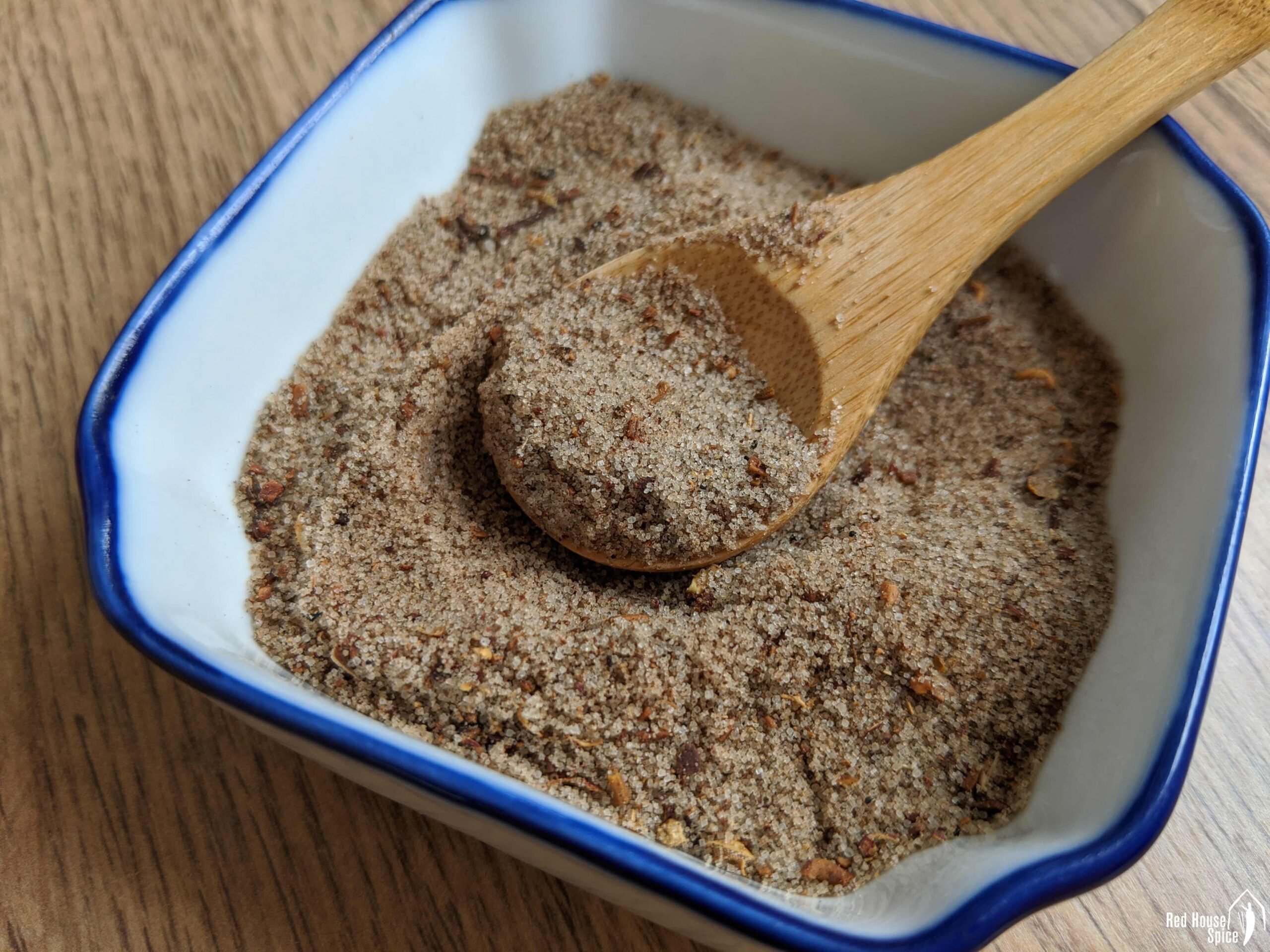
The classic salt and pepper seasoning (Jiao Yan/椒盐) used in the recipe is a powder mixture made of Chinese spices and fine salt. The simple version can be a blend of Sichuan pepper and salt. A more elaborated formula could include other spices like fennel seeds, star anise, ground ginger, etc.
It can be found in most Asian or Chinese stores. Alternatively, follow the recipe in my post on Salt and Pepper Shrimp to make salt and pepper seasoning from scratch. It’s much better than the commercial one for its fresher and more intense taste.
Substitutes: A mixture of fine salt and five-spice powder (or ground Sichuan pepper, ground black pepper) can be used to replace salt and pepper seasoning.
Other Ingredients
Apart from two key ingredients above, you’ll also need:
- Cornstarch and all-purpose flour (or gluten-free flour). They’re for coating the squid before deep-frying.
- Baking powder. A pinch of it will make the batter fluff up as it cooks, giving it a crispier texture.
- Cooking oil. Use a neutral flavoured oil with a high smoke point for deep-frying, such as canola oil, sunflower oil, peanut oil, vegetable oil, etc.
- Garlic, ginger, fresh chilli and scallions. These aromatics add more flavour and colours to the dish.
The cooking procedure
Step 1: Coat the squid
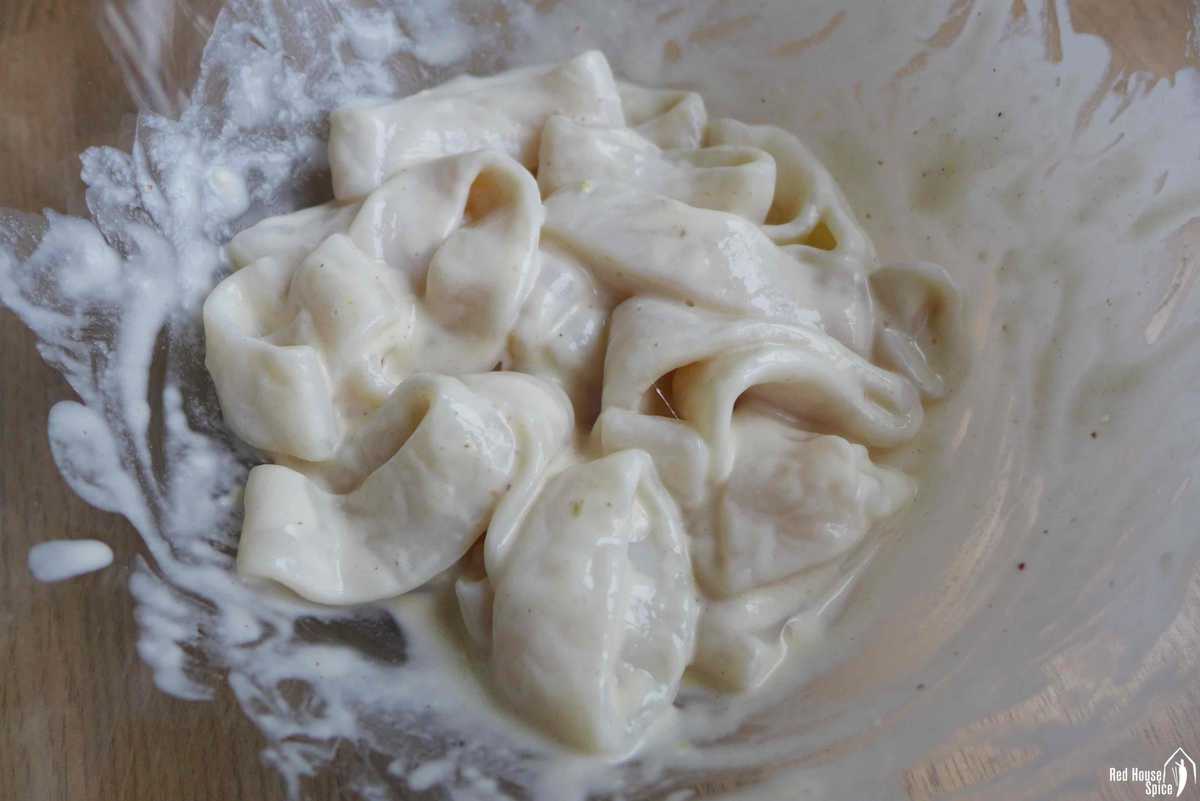
In a bowl, combine all-purpose flour, salt and pepper seasoning with water. Mix until you reach a semi-runny consistency. Add the squid and toss until all the pieces are coated well.
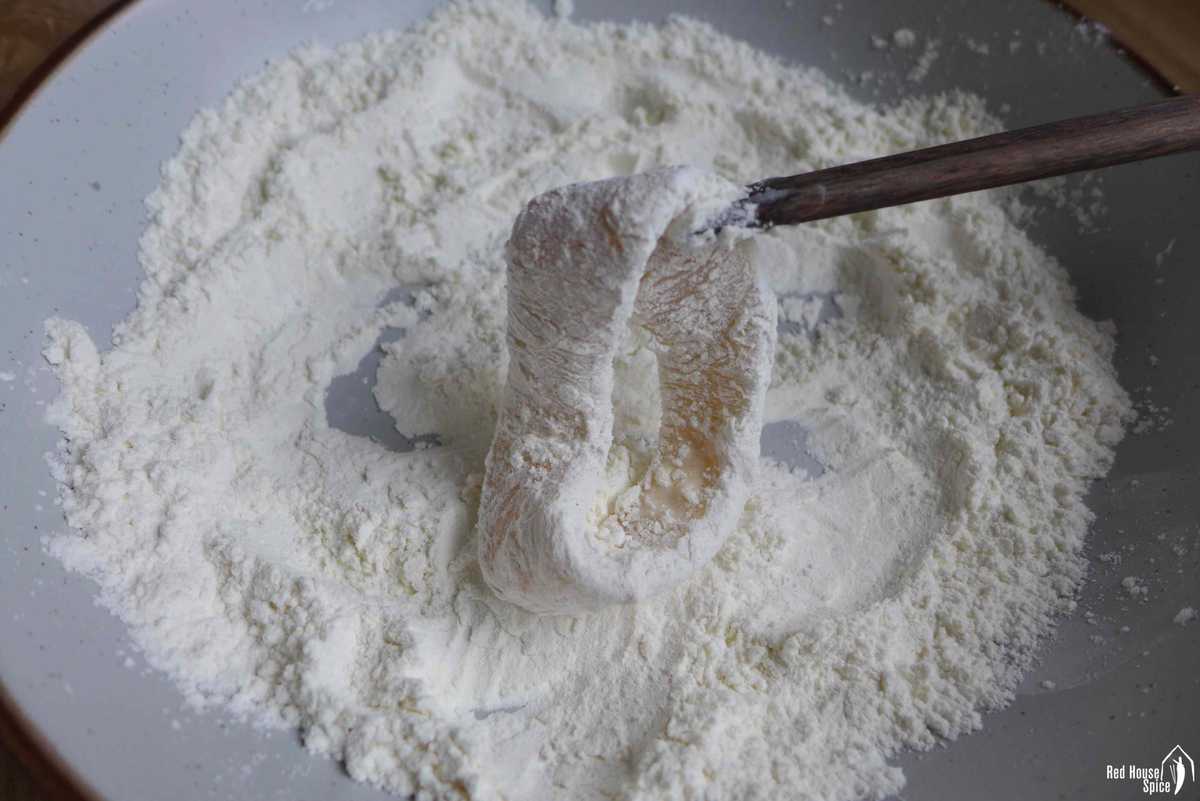
On a shallow plate, mix all-purpose flour, cornstarch, and baking powder. Put in a piece of squid and coat it generously with the dry mix. Do the same with the rest. Make sure to put the coated pieces on a tray spaced apart.
Step 2: Deep fry
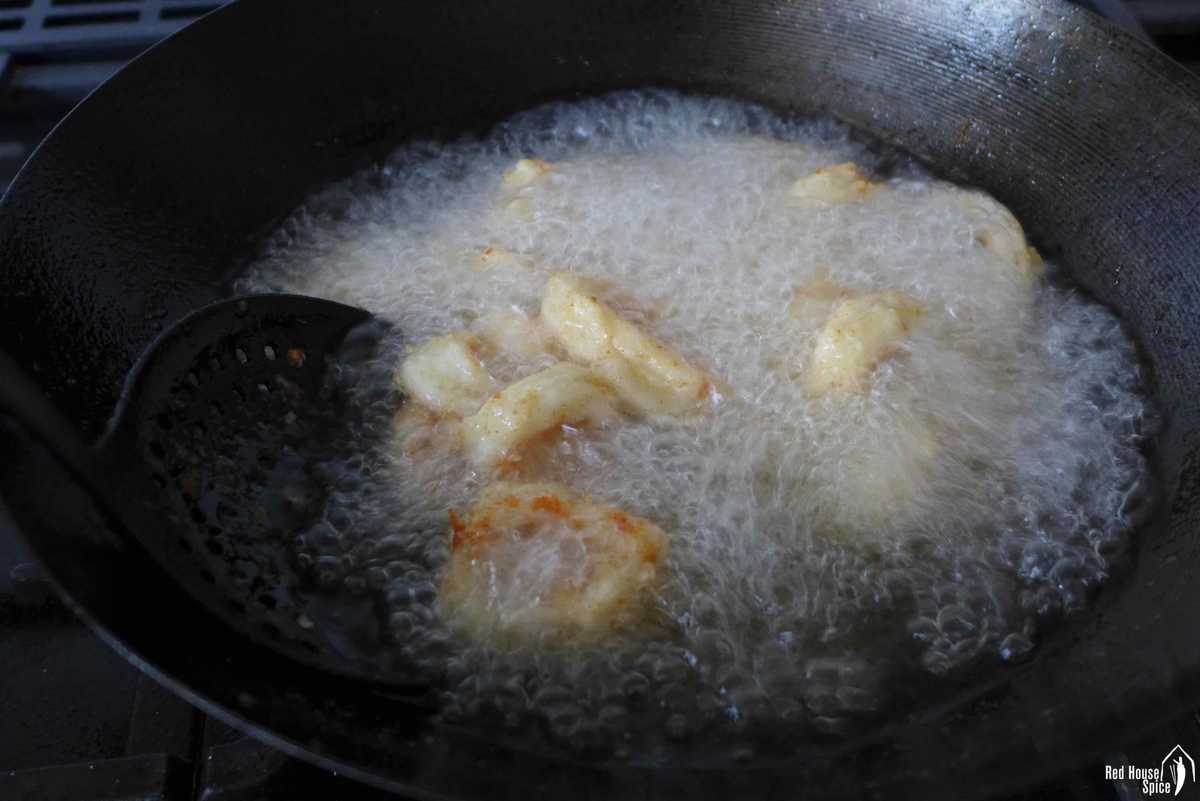
Heat cooking oil in a wok or pot until it reaches 180°C/350°F. Once the oil is hot enough, gently slide in the battered squid one by one and fry until crisp and slightly golden.
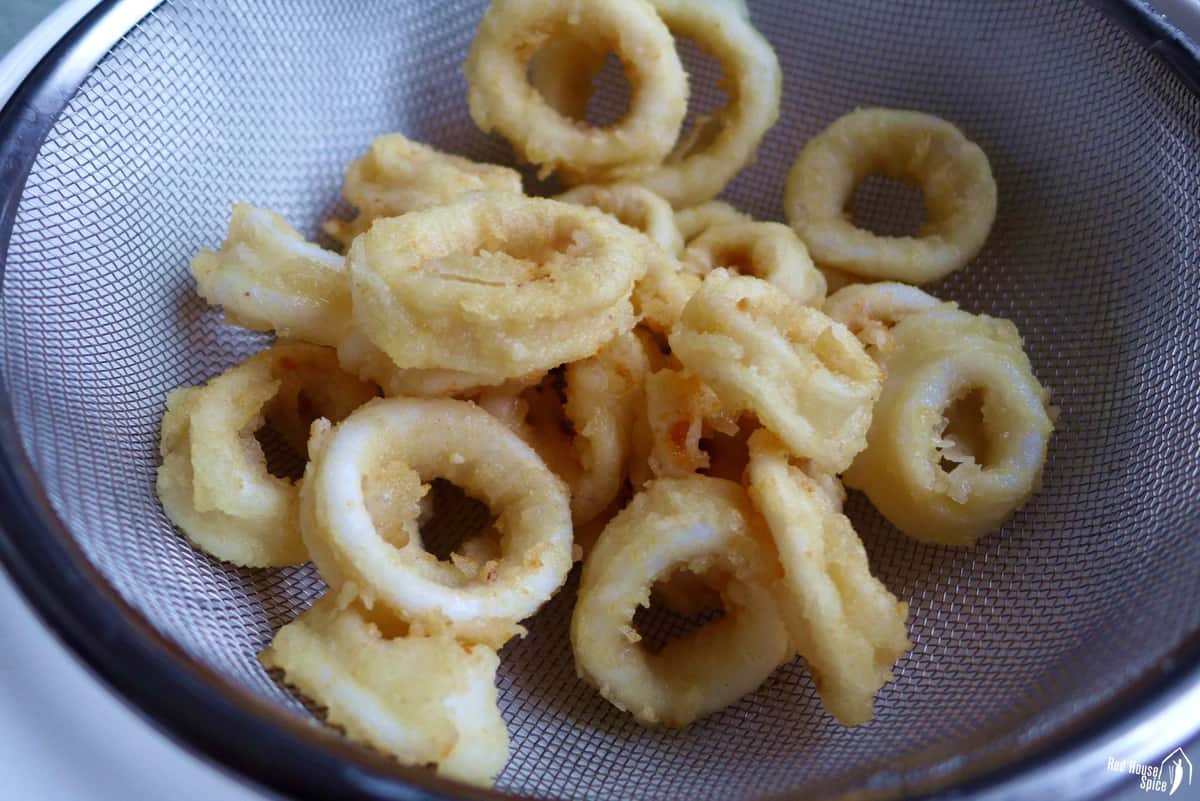
Transfer to a colander or over kitchen paper to remove any excess oil.
Step 3: Stir fry
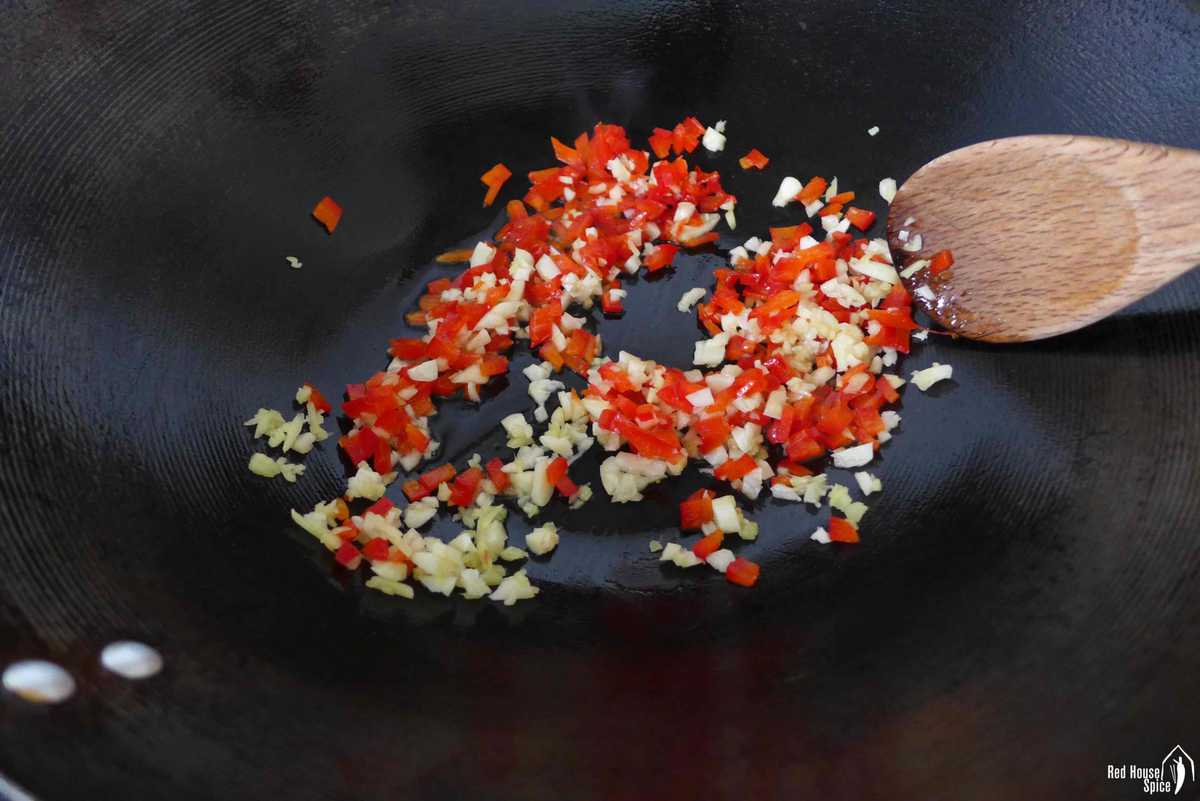
Carefully pour out the hot oil. Use the thin layer of oil left in the wok to fry minced garlic, ginger, and fresh chilli.
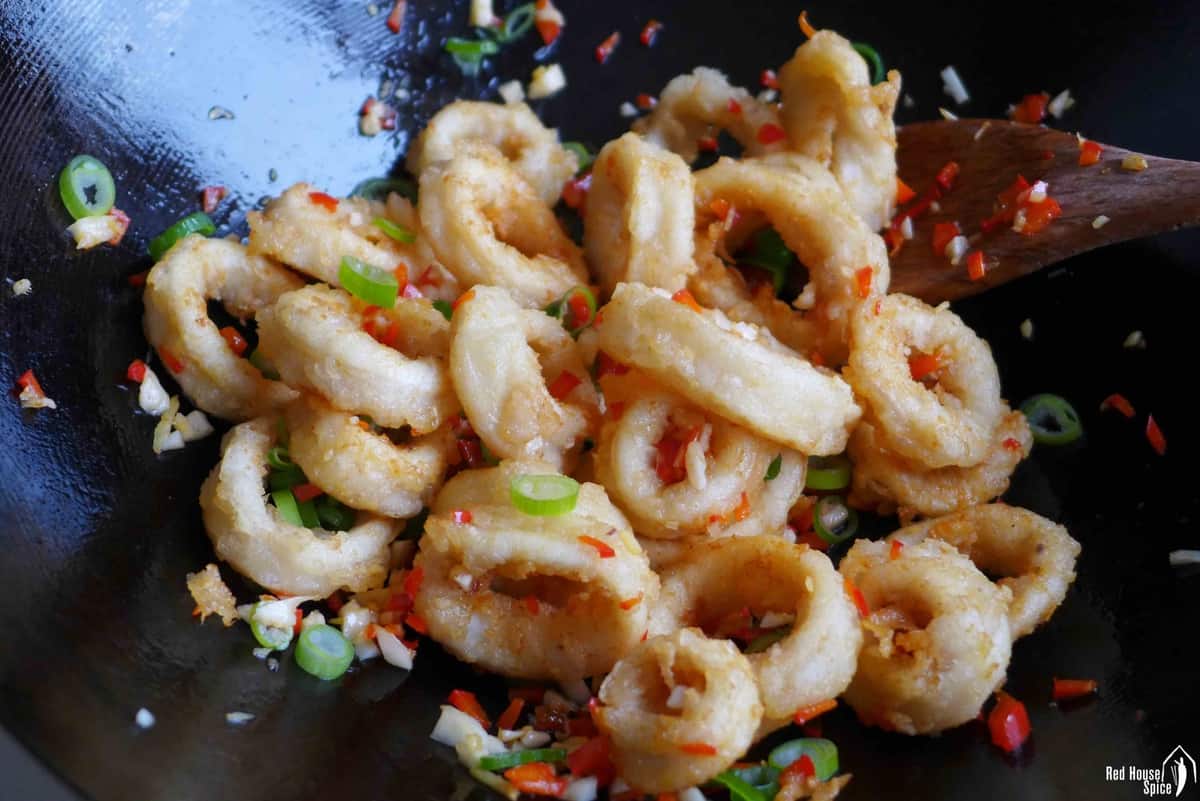
As soon as they turn slightly limp and become aromatic, add the squid and scallions. Stir everything together briefly before turning off the heat. Sprinkle with salt and pepper seasoning and serve warm.
Pro tips
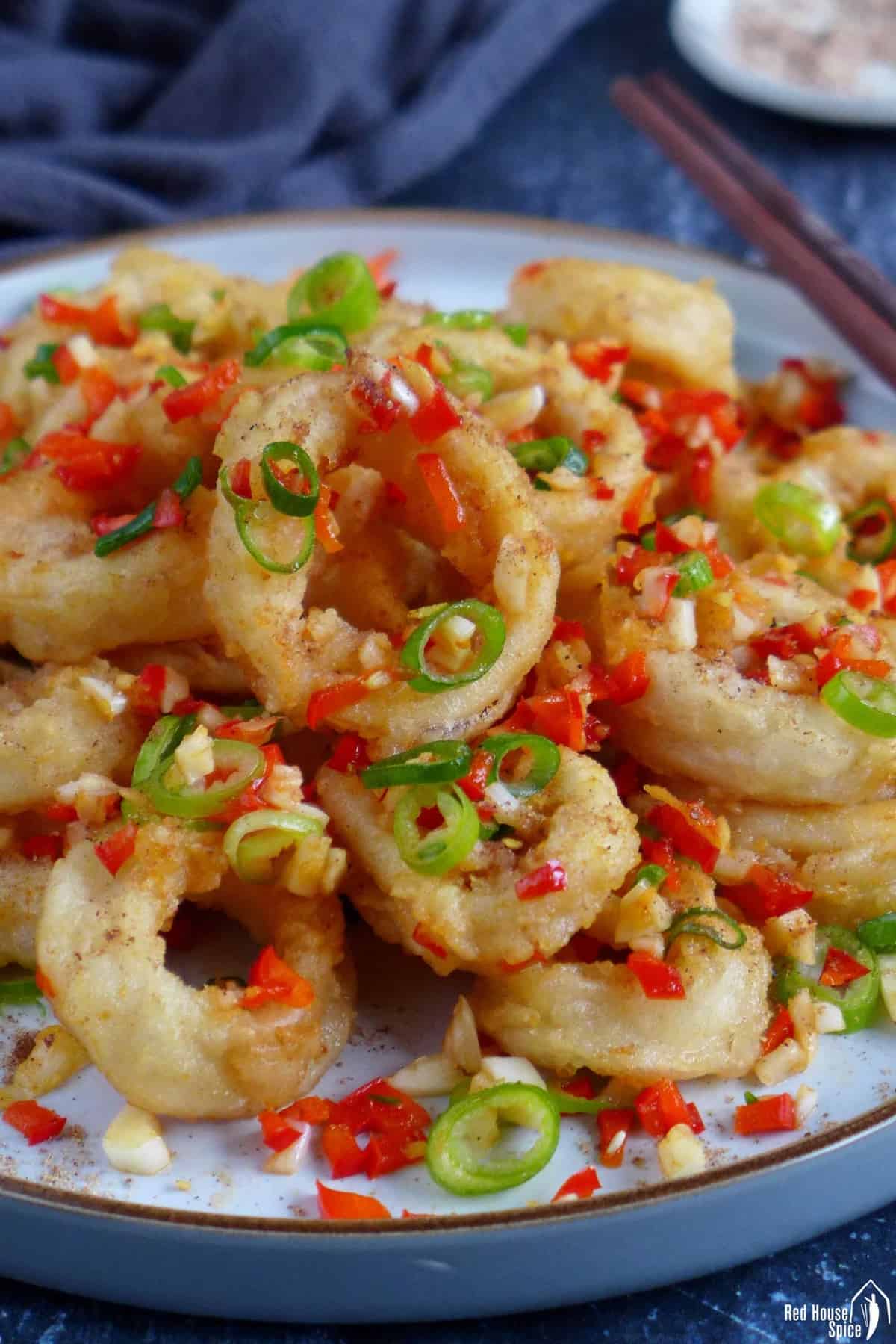
To ensure the best result, please read the following tips:
- In case you have large squids, it helps to soak them in lemon juice for 30 minutes before cooking to tenderise.
- Do not let the battered squid sit for long before frying them, or the outer coating will get moist too. This can result in the breading flaking off or separating as you fry them.
- When deep-frying, the oil should be hot enough. Otherwise, the batter will absorb the oil, and it will turn out lumpy and soggy. If you don’t have a kitchen thermometer (I highly recommend you get one though), check the temperature by testing one piece. You should see bubbles immediately appearing around the squid.
- Do not overcook the squid, or it will turn tough and rubbery. If the oil isn’t hot enough, the squid will be overcooked by the time the batter becomes lightly golden.
- Do not overcrowd the pan. Work in batches instead. Adding too many squid pieces at once will affect the oil temperature and will create steam. This will make the batter mushy instead of crispy and golden.
- Place the fried squids in a wide colander or over paper towels in a single layer as much as possible. This will let the excess oil seep out and make the dish less greasy.
Storing leftovers
This dish is best served from wok to plate! This is where you get to enjoy the tender squid and crunchy crust best. In case you have leftovers, refrigerate them in a lidded container and consume within 2 days. Reheat them using an air-fryer or oven to retain their crunchiness (but it won’t taste as good as fresh ones).
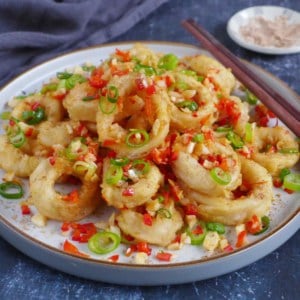
Salt and Pepper Squid (椒盐鱿鱼)
Ingredients
- 250 g squid, cut into rings or bite-sized pieces - about 9oz
For deep-frying
- 7 tablespoon all-purpose flour, divided
- ¼ teaspoon salt and pepper seasoning - see note 1 & 2 for homemade recipe and substitutes
- 3 tablespoon water
- 3 tablespoon cornstarch
- 1 pinch baking powder
- Cooking oil - for deep frying
For stir-frying
- 2 tablespoon minced garlic
- 2 teaspoon minced ginger
- Minced fresh chilli - to taste
- 1 stalk scallions, finely chopped
- ⅛ teaspoon salt and pepper seasoning - or to taste
Instructions
Prepare
- Mix 4 tablespoons of all-purpose flour, salt and pepper seasoning with water to form a semi runny paste. Add it to the squid. Stir well to ensure an even and thorough coating.
- In a plate, mix the remaining 3 tablespoons of all-purpose flour with cornstarch and baking powder. Put the squid, piece by piece, into the plate and generously coat its entire surface with the dry mix. Lay every finished piece onto a tray without touching one another.
Deep fry
- Heat the oil for deep frying in a wok until it reaches 180°C/350°F (see note 3). Gently slide in the squid to fry. Do not overcrowd. You probably need to cook in 2-3 batches.
- Once the squid becomes lightly golden, transfer out to a colander or over kitchen paper.
Stir fry
- Carefully pour out the hot oil leaving just a coating of oil in the wok. Add garlic, ginger and fresh chilli to the hot wok. Fry until fragrant.
- Put in the squid and scallions. Give everything a quick stir then dish out. Sprinkle salt and pepper seasoning over then serve warm.
NOTES
- Add 1 teaspoon of whole Sichuan pepper, ½ star anise, ½ teaspoon of sesame seeds, ¼ teaspoon of fennel seeds and 4 teaspoons of salt to a pan.
- Toast over low heat until the salt grains become a little yellow.
- Leave to cool then grind in a mortar or a spice grinder until powdery.
NUTRITION
NUTRITION DISCLOSURE: Nutritional information on this website is provided as a courtesy to readers. It should be considered estimates. Please use your own brand nutritional values or your preferred nutrition calculator to double check against our estimates.



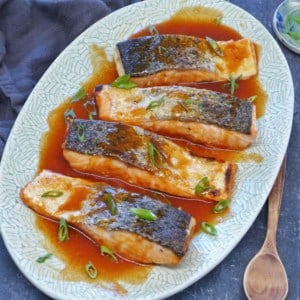
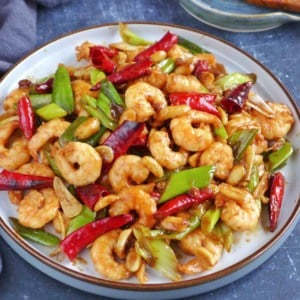
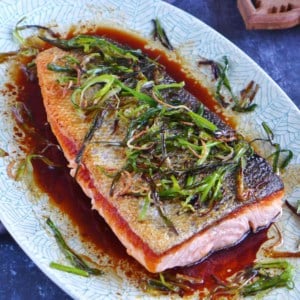
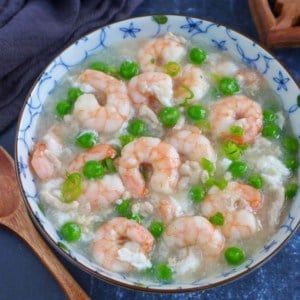
brilliant recipe, a bit time consuming but well worth the effort because the result was as good as any tasted in a restaurant and better than the recipe by Jamie Oliver!!
Delicious!
Wonderful to hear that!
Wei, you hit another soft spot …Calamari ….yum just make sure you use long sleeve shirt and a screen for the splatter…
Thanks Charles! There won’t be much splatter if the squid is well coated and isn’t too wet.